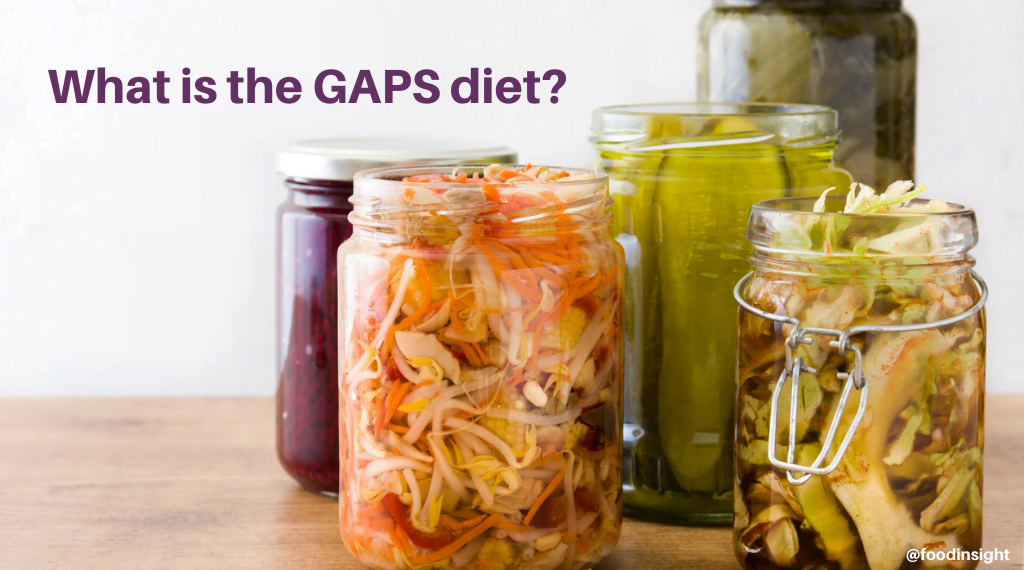Basics of the GAPS diet
The GAPS diet is an elimination diet that involves cutting out grains, pasteurized dairy, starchy vegetables and refined carbohydrates. The GAPS diet theory argues that the omission of certain foods will improve gut health, which can ultimately improve some conditions of the brain, including autism, Attention-Deficit/Hyperactivity Disorder (ADHD) and dyslexia.
GAPS stands for Gut and Psychology Syndrome. According to the GAPS theory, a leaky gut—a term used to describe an increase in the permeability of the gut wall—allows chemicals and bacteria to enter your bloodstream, causing a host of health consequences ranging from “brain fog” to autism. It is important to stress that there is currently little evidence to suggest these conditions are caused by a leaky gut.
Guidelines for the GAPS diet
Following the GAPS diet can be a very lengthy process. There are three phases:
- Introduction phase: The GAPS diet
This is the most restrictive part of the diet. It is called the “gut healing phase” and can last from three weeks to one year, depending on a person’s symptoms. In this phase, grains, pasteurized dairy, starchy vegetables and refined carbohydrates are eliminated, and broths, stews, and probiotic foods make up much of a person’s eating patterns. The GAPS diet recommends that you move from one phase to the next once you can tolerate the foods you have introduced. You are considered to be tolerating a food when you have a normal bowel movement.
- Maintenance phase: The full GAPS diet
The full GAPS diet can last 1.5–2 years. During this part of the diet, people are advised to base the majority of their eating patterns on the following foods:
- Fresh meat, preferably hormone-free and grass-fed
- Animal fats, such as lard, tallow, lamb fat, duck fat, raw butter, and ghee
- Fish
- Shellfish
- Organic eggs
- Fermented foods, such as kefir, homemade yogurt and sauerkraut
- Vegetables
- Moderate amounts of nuts
- GAPS-recipe baked goods made with nut flours
Additional recommendations while following the GAPS diet include:
- Do not eat meat and fruit together.
- Use organic foods whenever possible.
- Eat animal fats, coconut oil, or cold-pressed olive oil at every meal.
- Consume bone broth with every meal.
- Consume large amounts of fermented foods, if you can tolerate them.
- Avoid packaged and canned foods.
- Reintroduction phase: Transitioning away from GAPS
The GAPS diet suggests that the reintroduction phase may begin after you have experienced normal digestion and bowel movements for at least six months. However, this reintroduction phase may take a long time, as it involves slowly reintroducing foods back into your diet.
The diet doesn’t detail the order of reintroduction or the exact foods you should reintroduce. However, it states that you should start with potatoes and fermented, gluten-free grains.
Even once you’re off the diet, you’re advised to continue avoiding all highly processed and refined high-sugar foods.
The GAPS diet and your health
To date, there is no research to support that the GAPS diet can help treat the conditions it claims to. The diet has not been scientifically tested, and the only claims in support of this diet are anecdotal. In addition, the introduction and maintenance phases are so restrictive that adherers could be at serious risk for malnutrition.
It is true that there is emerging evidence to show that our gut health and brain are connected. However, that research has been mostly centered around conditions like anxiety and depression. Research on the gut microbiome is still in its infancy, but to date evidence suggests that certain foods (think fruits and vegetables and probiotics and prebiotics) could positively impact our gut microbiome.
The bottom line
It’s important to acknowledge how challenging dietary needs can become when you or someone close to you is diagnosed with a health condition. However, the GAPS diet is too restrictive and lacks scientific evidence to justify its implementation. Research examining the gut-brain connection is continually evolving. If you have concerns about your health or diet, we recommend working with your doctor and/or a local registered dietitian.
This article contains contributions from Kris Sollid, RD.
